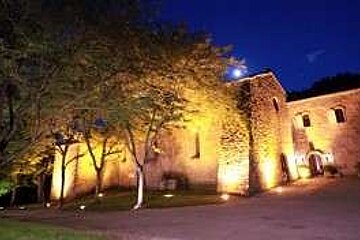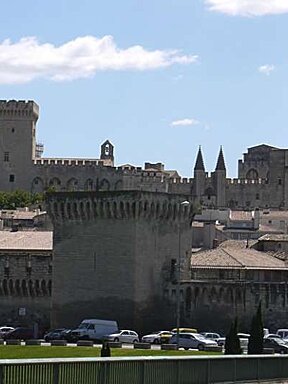
© sainte-roseline.com
The Chapel of Sainte-Rosaline
A perfectly preserved body
Come September, the forest fires have been extinguished, the heat waves have abated and the first rains have fallen - for many areas in Provence the first drops since the end of May. The air is cooler, though still warm in the middle of the day, and the sea has lost quite a few degrees of temperature, after an amazing high of 28 degrees Celsius.
The vineyards are full of activity, the tractors and their carts laden with grapes are slowing down the traffic on the D-roads. It's September and the summer is finally over. For many it's a relief.
To celebrate we drove to Château Sainte-Rosaline (outside Les Arcs, near Draguignan), not so much to observe the harvest or taste the wines (the temptation was there: the château is one of the eighteen Crus Classés in Provence) but to visit the chapel next to the castle where the mummified body of Sainte-Rosaline is displayed in a glass coffin.
Sainte Rosaline was the very pious daughter of the mean-spirited Arnaud de Villeneuve, duke of Les Arcs. One day - we're in the late 13th century - he caught her on her way to feed his starving peasants. He demanded that she open her basket which contained nourishment for the underlings of Arnaud. When she opened the basket, a shower of roses poured out. According to the legend the angels had replaced the food to protect Rosaline against the wrath of her father.
At the age of fourteen she entered a convent in Avignon. In 1300 she returned to Les Arcs and became prioress of what was then called Abbaye de La Celle Rauboud, now named Château Sainte-Rosaline. I don't believe her life was very eventful, except for the fact that she was known to be so very pious. Another anecdote lives on in the mosaic of Marc Chagall (Le Repas des Anges) that adorns one of the walls of the chapel. As a novice in the Abbey, Rosaline was responsible for preparing the midday meal. Lost in prayer, she had forgotten her task. Instead, angels took over and made sure a meal was waiting for the nuns in the abbey.
You may ask why, if her life was relatively uneventful, apart from a couple of interventions by angels, she has this Roman chapel from around 1200 to herself? Why has it attracted pilgrims from the Renaissance till today? Why did a renowned artist like Chagall feel drawn towards Sainte-Rosaline?
The answer lies in a glass coffin beside the nave of the chapel. A body that has been preserved for almost 700 years, without any outside help. The skin is of a dark-brown leathery texture, the tiny hands are suspended as little claws, one of her feet is slightly turned inwards. Her open mouth shows a few white teeth, tiny ones. Everything is so small, almost like a bird.
Upon her death she received a regular burial, but five years later her brother, bishop of Digne, had her exhumed. Why, the story doesn't say. To everyone's great surprise, the body had not disintegrated, the eyes shone as lively as in life.
At first she was not put on display, except for her eyes which were kept in a separate reliquary. What happened to the eyes, at the instigation of Louis XIV, is too lugubrious to tell on a friendly site such as this! Only in 1894 was her body put on display, clothed in a religious habit.
Apart from the glass cage, it is worth looking around in the chapel. Above the main altar hangs an impressive Baroque retable. Separating the choir from the nave is a richly adorned Renaissance gate. There are bronzes from Diego Giacometti (brother of Alberto) and of course the Chagall mosaic.
Just to the right of the chapel you find a small door that leads to a lovely and quiet cloister. Unfortunately, a wooden gate prevents you from entering.
For those not intrigued by mummies and mosaics, there is the wine château, just a few steps away. You can taste the wine and visit the caves - they are multi lingual.
The chapel is only open on afternoons, from 3 till 7 pm and closed on Mondays. There's no charge. Pilgrimages occur twice a year - on 17th January (St Rosealine's Day) and the first Sunday of August.
























